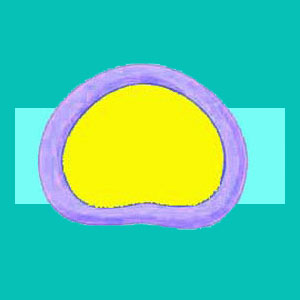
A spinal disc is also normally known as an intervertebral disc. The human spine is made up of 24 individual bones, called vertebrae, and 2 additional grouped sections of bone, called the sacrum and the coccyx. In between each vertebra exists a soft cushiony structure called a disc, which helps facilitate movement in the spine.
If the intervertebral discs did not exist, we could not move our spines. In addition, we would be incredibly prone to injury. Luckily, we do enjoy the benefit of discs in our spines and this article will provide insight on how these structures are vital to our physical functionality and very survival.
Spinal Disc Purpose
Intervertebral discs create small amounts of movement from one vertebral level to the next. This allows each vertebra to move its position in regards to the vertebral bones above and below it. When movement is distributed across the entire spine, discs allow a great range of motion, while still maintaining the protective and supportive functions of the vertebral bones.
Discs also help to absorb shock placed on the physical body in two ways. First, the soft nature of the discs help to maintain the natural “S” shaped curve of the spine. This shape prevents vertical loading, which occurs in patients with a straightened spine. Spinal curves distribute weight more effectively and help lessen force placed on the body.
Discs act as shock absorbers between individual vertebral bones, providing soft cushions between the hard surfaces of the spine.
Aging Intervertebral Disc Structure
As discs age, it is normal for them to experience degenerative changes. Typically, this means that discs will dry out and shrink, causing a permanent loss of height, diameter and circumference.
Although this process might cause some problems in a small percentage of patients, it is typically completely asymptomatic in the vast majority. Patients should learn that their disc changes are completely normal, instead of being frightened by such nonsensical terminologies like degenerative disc disease. 99% of diagnosed cases of DDD consist of completely normal spinal changes and should not be confused with a pathological disease process at all.
Spinal Disc Pain Problems
Knowledge overcomes ignorance and fear. If you are a patient with a diagnosed disc pain condition, it is up to you to learn the facts about which conditions are truly qualified to be considered health risks and which are merely expected parts of life.
Remember that degenerative changes occur in most adults by the age of 30 and often far earlier. You do not have to be old to have significant age and activity-related alteration of the spinal structures. These changes will also be accelerated by genetic patterns and lifestyle factors. Do not fear these changes. Only fear the opportunistic care providers who try to make you think that they are unusual and a real cause for alarm.




